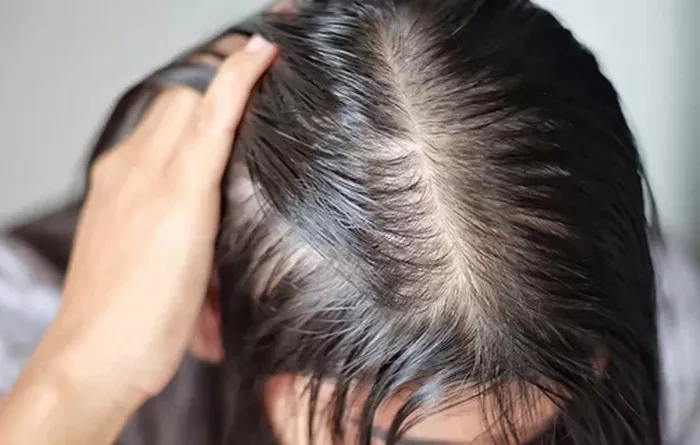Overview of Hair Loss in Women
Hair loss is a common concern among both men and women, but it’s often perceived as primarily a male issue. However, hair loss affects women as well, albeit in different patterns and for various reasons. It’s crucial to recognize that experiencing hair loss is not uncommon for women and is often a natural part of the aging process or related to hormonal changes. Understanding the causes, types, symptoms, diagnosis, treatment options, preventive measures, and when to seek medical advice can help women navigate this often distressing condition with confidence.
Common Causes
Hair loss in women can stem from a variety of factors, including hormonal changes, medical conditions, nutritional deficiencies, and stress-related factors. Hormonal changes, such as those occurring during menopause or pregnancy, can disrupt the hair growth cycle, leading to increased shedding. Medical conditions like thyroid disorders and anemia can also contribute to hair loss by affecting hormone levels or nutrient absorption. Additionally, nutritional deficiencies, particularly of iron, zinc, and vitamins essential for hair health, can result in weakened hair follicles and increased shedding. Stress, both physical and emotional, can trigger a type of hair loss called telogen effluvium, where a significant number of hair follicles enter the resting phase prematurely, leading to excessive shedding.
Types of Hair Loss
Hair loss in women can manifest in various ways, depending on the underlying cause. Androgenetic alopecia, also known as female pattern hair loss, is the most common form and typically results in diffuse thinning of the hair, particularly on the crown and top of the scalp. Alopecia areata presents as patchy hair loss and is believed to be an autoimmune condition where the body’s immune system mistakenly attacks hair follicles. Telogen effluvium is characterized by excessive shedding of hair, often triggered by significant stressors such as childbirth, illness, surgery, or extreme weight loss. Other less common types of hair loss in women include traction alopecia, caused by repeated tension or pulling on the hair, and anagen effluvium, which often occurs as a side effect of chemotherapy.
Symptoms and Diagnosis
Recognizing the symptoms of hair loss in women is essential for prompt diagnosis and treatment. Symptoms may include overall thinning of the hair, widening of the part line, noticeable bald patches, or increased shedding during routine activities such as washing or brushing the hair. If you notice any of these signs, it’s essential to consult a healthcare professional for a thorough evaluation. Diagnosis typically involves a physical examination, medical history review, and sometimes additional tests such as blood tests or a scalp biopsy to identify underlying causes or contributing factors.
Treatment Options
Treatment options for hair loss in women vary depending on the underlying cause and severity of the condition. Over-the-counter remedies such as minoxidil (Rogaine) can help stimulate hair growth and prevent further thinning. Prescription medications like finasteride (Propecia) may be recommended for women with androgenetic alopecia, although it’s not FDA-approved for use in females and should be used with caution, especially in women of childbearing age. Other treatment modalities include corticosteroid injections for alopecia areata, topical immunotherapy, low-level laser therapy, and hair transplantation surgery for more advanced cases.
Preventive Measures and Lifestyle Changes
While not all causes of hair loss are preventable, adopting certain lifestyle changes and preventive measures can help manage or reduce the risk of further hair loss. Eating a balanced diet rich in essential nutrients for hair health, such as iron, zinc, vitamins A, C, D, and E, and omega-3 fatty acids, can support healthy hair growth. Managing stress through relaxation techniques such as yoga, meditation, or deep breathing exercises can also help reduce the risk of stress-related hair loss. Avoiding tight hairstyles, excessive heat styling, and chemical treatments can prevent damage to the hair shaft and follicles, reducing the risk of traction alopecia and other forms of hair loss.
When to See a Doctor
While occasional shedding is normal, persistent or excessive hair loss warrants medical evaluation to rule out underlying health issues and determine the most appropriate course of treatment. If you notice sudden or significant hair loss, changes in hair texture or appearance, or other concerning symptoms such as scalp tenderness or redness, it’s essential to seek prompt medical attention. A healthcare provider, preferably one specializing in dermatology or trichology, can conduct a comprehensive assessment and develop a personalized treatment plan tailored to your specific needs and goals.
In conclusion, hair loss in women is a multifactorial condition with various causes, types, symptoms, and treatment options. By understanding the underlying factors contributing to hair loss and seeking timely medical advice, women can effectively manage this common concern and maintain healthy, vibrant hair throughout their lives. Remember, you’re not alone in your experience, and help is available to address your concerns and restore confidence in your appearance.


